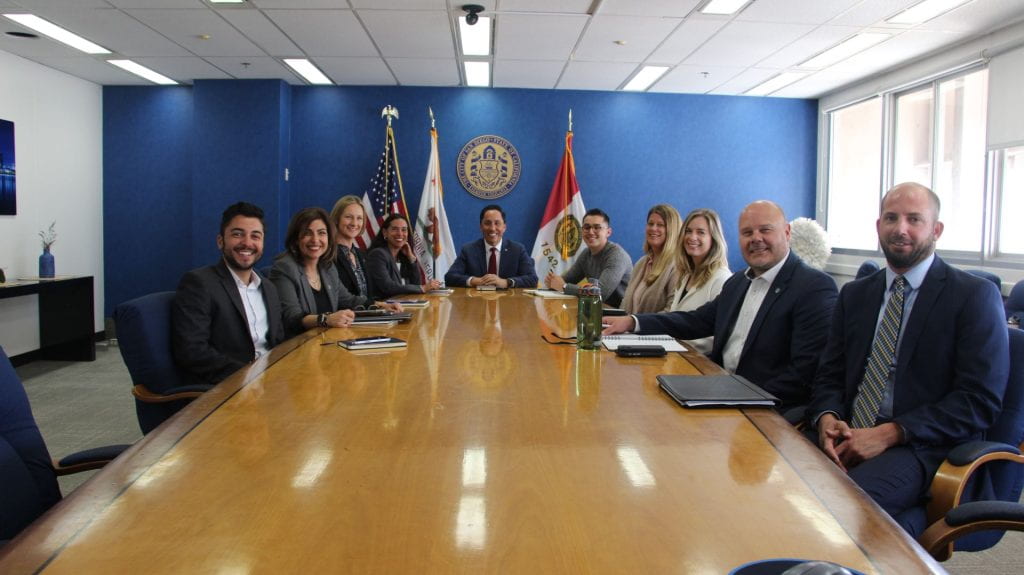Guest blog by Chris Ackerman-Avila, Christina Bibler, Jaymie Bradford, Jessica Lawrence, Kohta Zaiser, Kris McFadden, Paola Avila, Rania Amen.

We focused on tackling the lack of public support for the revitalization of our civic core, because we want our residents to be effectively served, our employees to have a safe and conducive workplace, and to better utilize our public land.
Our biggest accomplishments included the following:
- Receiving State Housing and Community Development Department approval for our Notice of Availability.
- Successful Land Use & Housing Committee vote of 3-1 to advance our Notice of Availability to City Council.
- Successful City Council vote of 8-1 to release our Notice of Availability to interested parties and create a capital improvement project for a new City Administration Building with initial funding; $2M.
- Milestones in geotechnical work for proposed new City Administration Building site and nearby proposed new Fire Station site, both confirming site suitability for future construction.
- Positive media coverage of our efforts, including from news sources that are typically adversarial of our administration.
- Spreading the word about our efforts to dozens of groups and organizations through presentations and word of mouth to hundreds of people and more than two dozen groups.
- In the process of evaluating proposals from an RFP to secure real estate advisory and community engagement consultants which will support our efforts moving forward.
- Productive and recurring briefings and conversations with all (except 1) City Councilmembers to address concerns and answer questions.
- Additional affordable housing or shelter solutions will be explored offsite as a response to the conversations and concerns from City Councilmembers regarding civic center redevelopment: Former Central Library and Homeless Resource Center.
- Uncovering and reviewing existing employee workplace satisfaction data.
- Uncovering and sharing with the media the current deteriorated condition of the City’s Administration and Operation Buildings where tours and condition assessment information are made available to the public and media.
We learned not to define your problem as the lack of a solution! There is more to the problem, and you need to dig and ask why. Stakeholder mapping can offer new entry points and ideas. learning how to construct and reconstruct a problem as the first step toward solving it. Also, the fishbone diagramming process can take several iterations and evolve as more conversations and entry points and root problems are uncovered. Continual process to understand feedback and collect/note small wins.
The problems we face are complex, but that does not mean they’re not digestible. Large problems are usually just a combination of multiple little problems, each with a realistic and achievable entry point. There is no reason to feel overwhelmed when a massive problem comes your way if you look at big problems as a series of little problems. Make a bigger deal of small wins to bring stakeholders. This approach is truly helping put effort into solving the true problem rather than jumping on unrelated actions and solutions.
The team is already using the work we’ve learned into current and future campaigns, controversial funding prioritization policies, and chronic/wicked problems facing several of our operational departments.
In reflecting on the large strides we’ve made in a matter of months, we urge those reading to take pride in incremental progress you make, no matter how small and ensure you have a team with varied voices and trusted hearts to whom you can communicate along the way. Also, despite the complexity of the landscape you are in, by expanding your outreach to the various stakeholders, we can shift from finger-pointing to creating a learning environment for all.
This is part of a blog series written by city leaders who participated in the Bloomberg Harvard City Leadership Initiative cross-boundary collaboration track during 2023.
